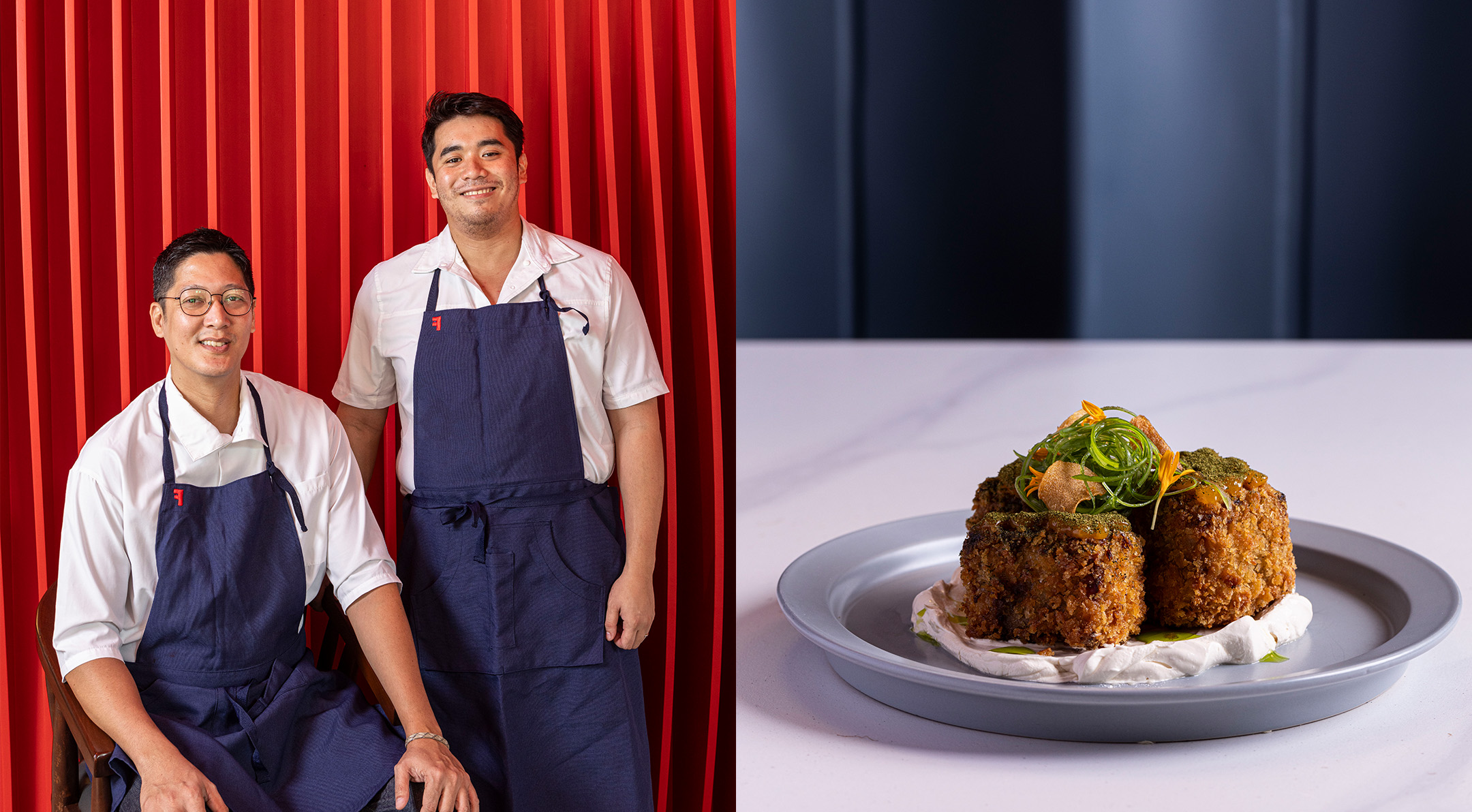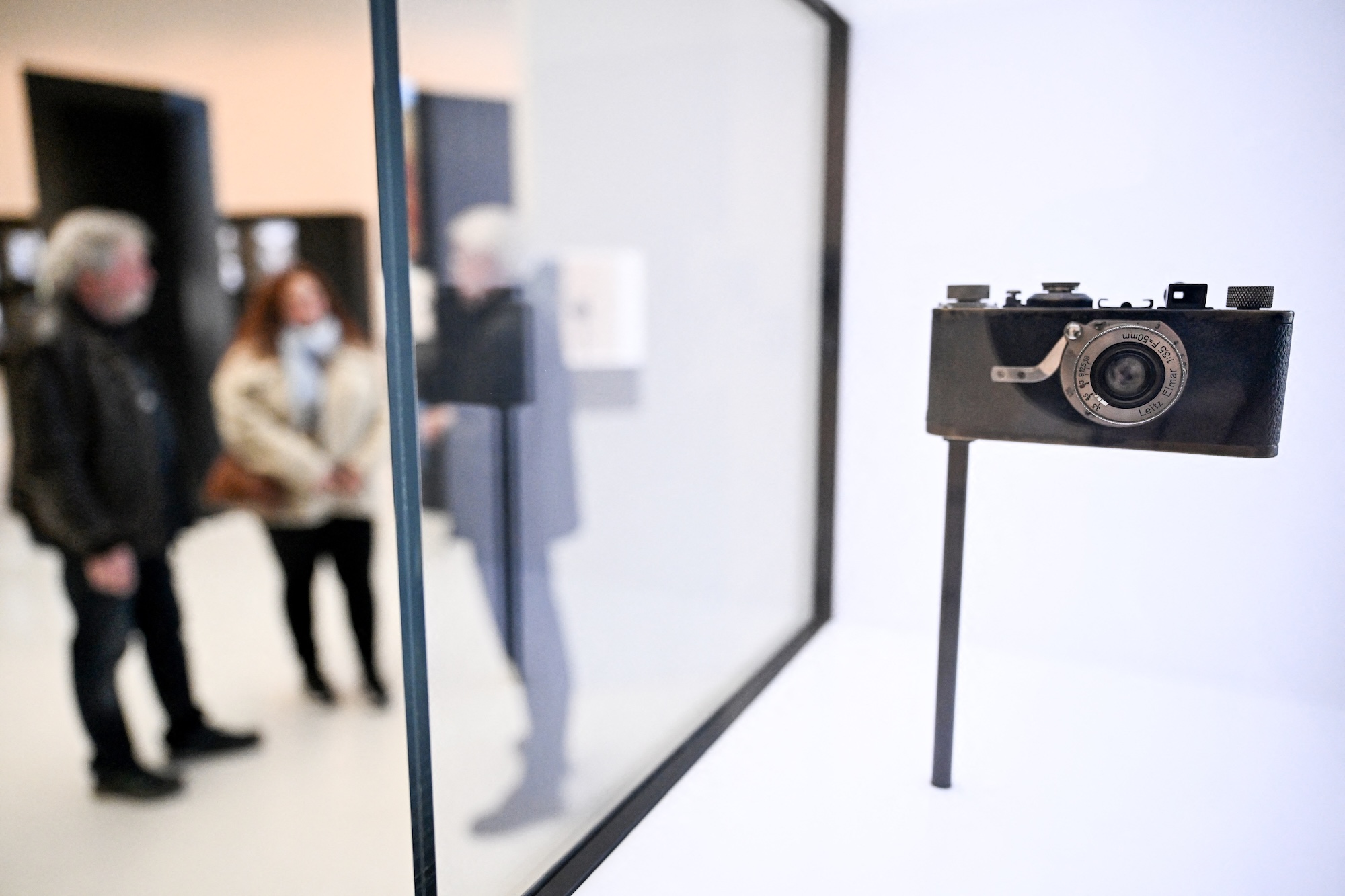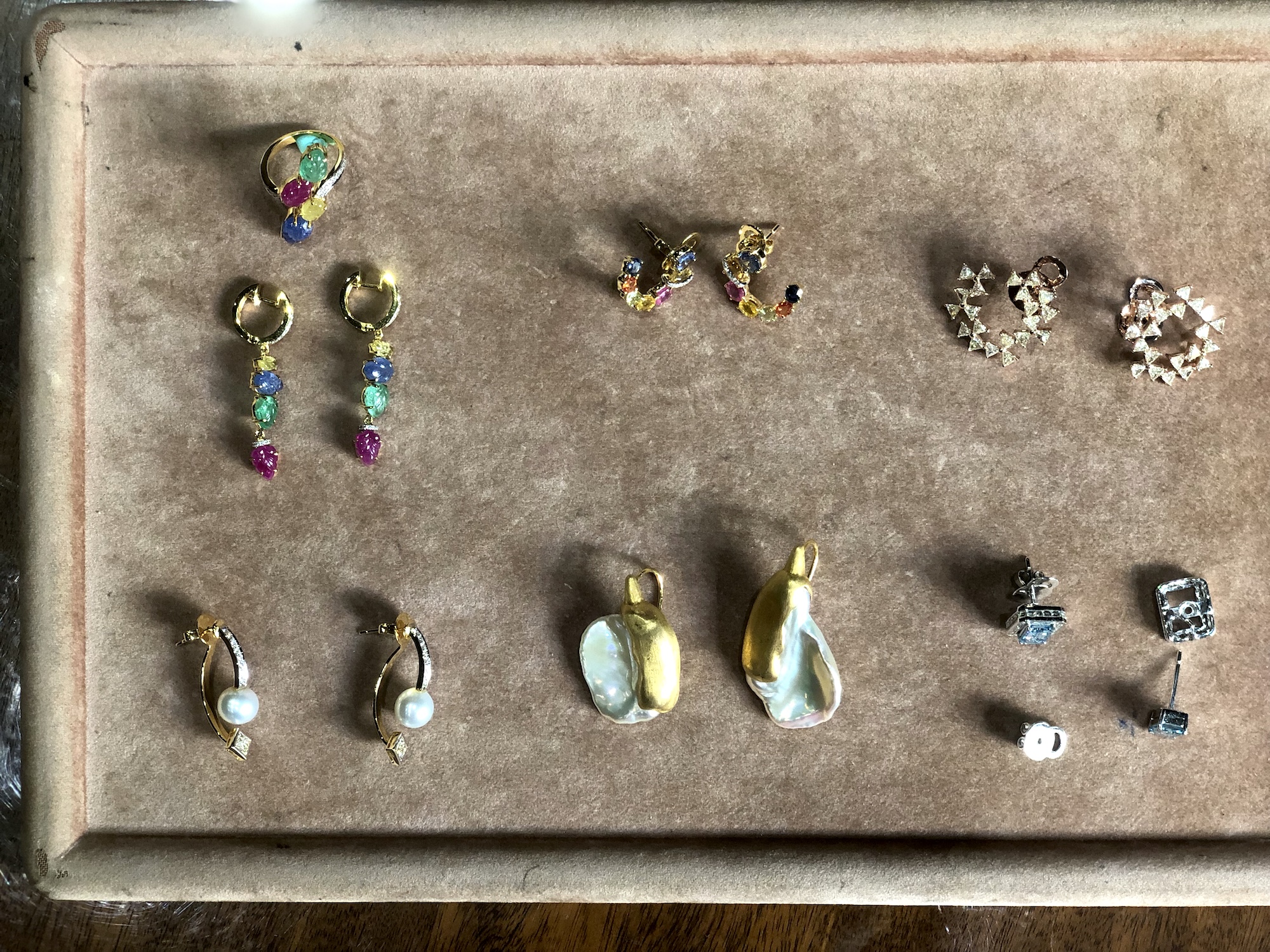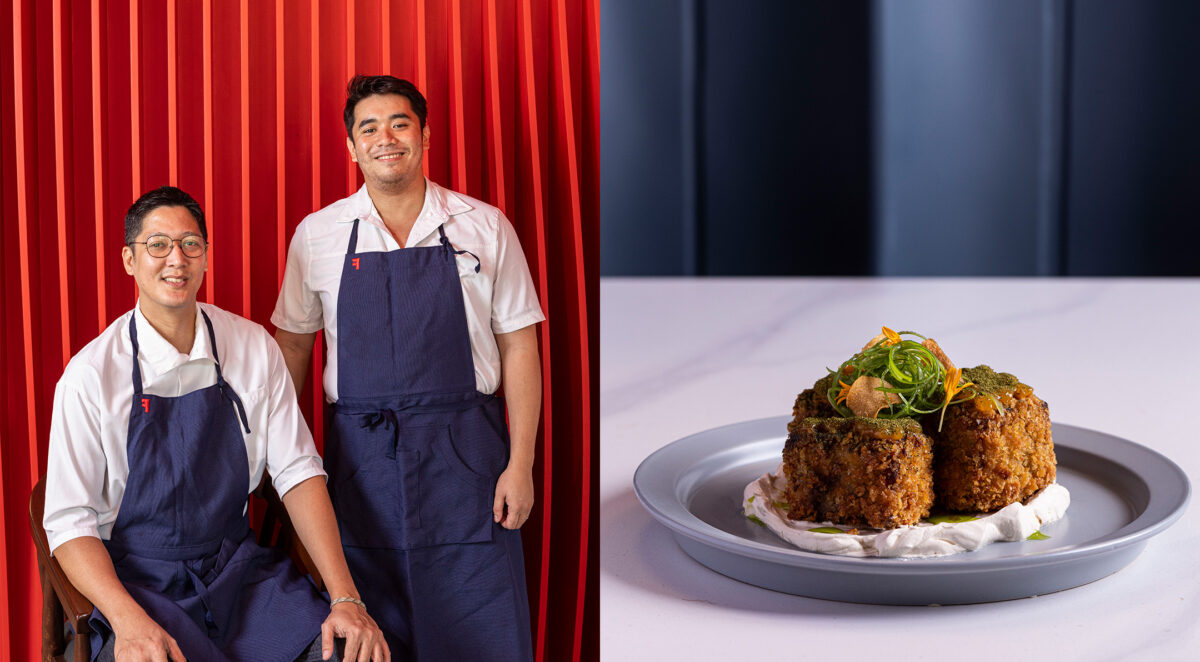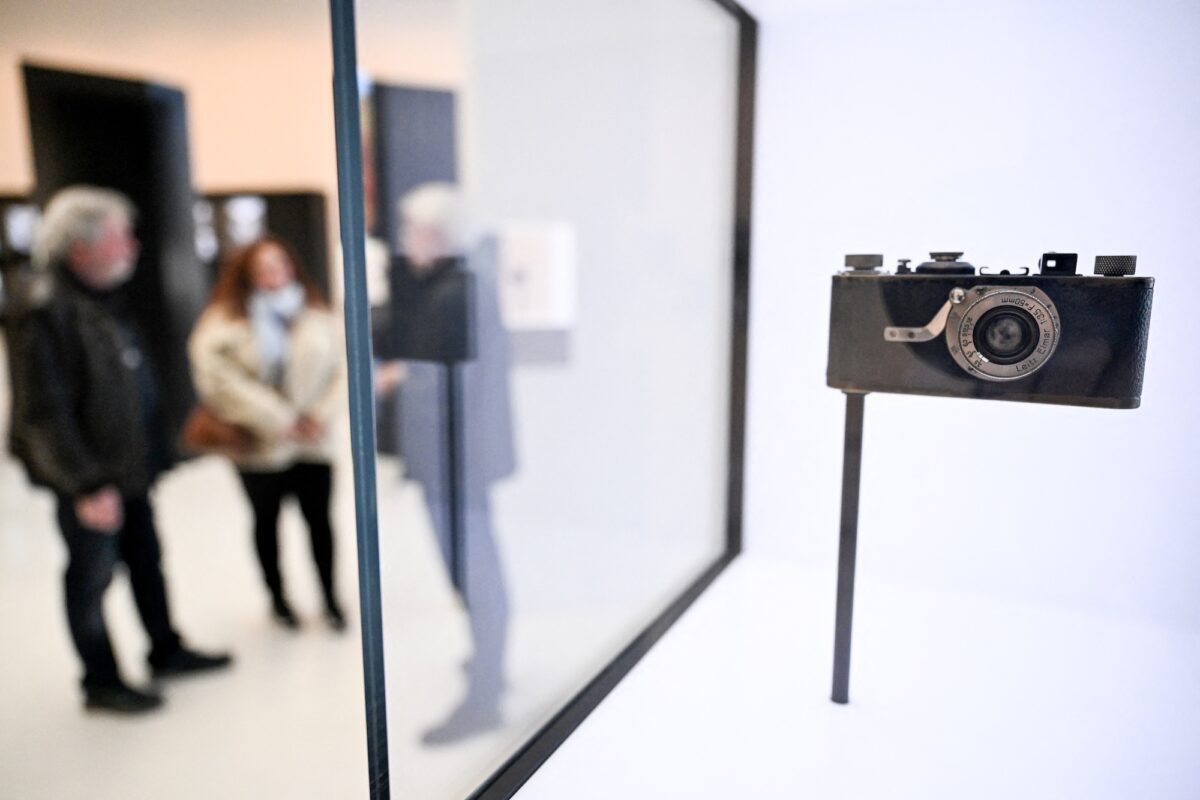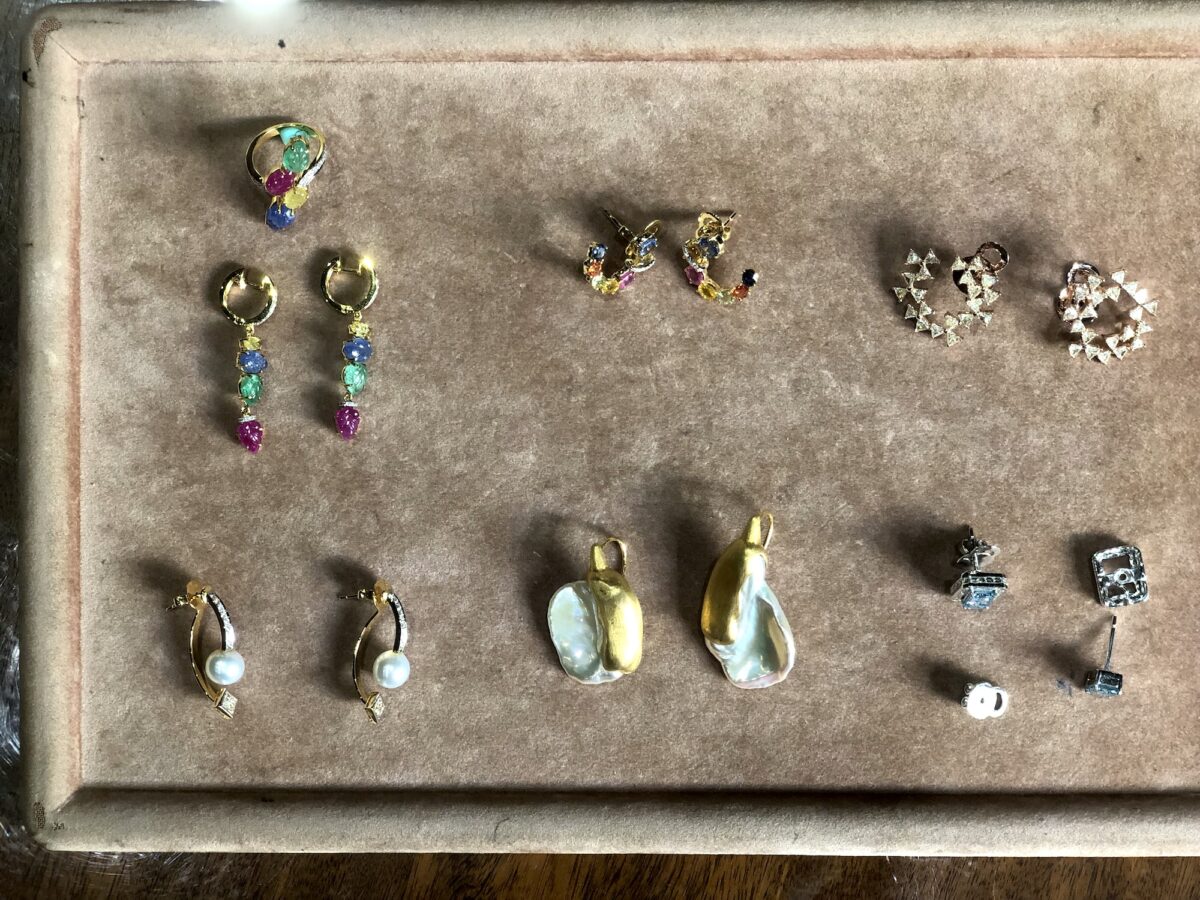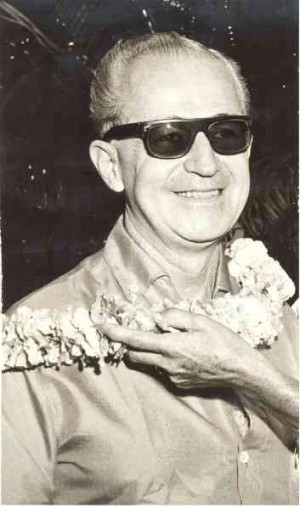
I first met him when I was about 6 years old, this stern British gentleman who smelled so good, but looked so forbidding when he found my disarray of Barbie dolls, Chinese checkers, Old Maid cards and stack of clothes fashioned into a tent blocking his way.
Many many years later, it would be Ronnie Laing’s mess that would be in total disarray in my farm house in Batangas, though there were no disapproving looks this time. The narra panels and kamagong planks that used to be part of Laing’s Sta. Mesa house now form part of my home, a serendipitous twining of fate that bookended my association with this famous decorator.
To Imelda R. Marcos watchers, Laing was a familiar name. The former First Lady loved fresh flowers and Laing happily provided them from his flower shop. Soon enough, he became the most revered society florist of the Marcos era who decorated Imelda Marcos’ houses, every event at Malacañang, and the presidential yacht.
When Mrs. Marcos bought the Teus Mansion in San Miguel, Manila, she hired Ronnie and antique dealer Viring de Asis to restore and decorate it. The mansion is now one of Malacanang’s guesthouses where the Marcos silver collection is on display.
The last time I saw this interior decorator and florist was in 1979 when my aunt Bambi Harper took me to his shop in Mabini. They were both prominent antique dealers and collectors in Manila and I’d wait quietly till they were done discussing business. Laing was always polite and quite pleasant but this was the expected decorum “for the younger ones” who were around him.
Years before, he would order my cousins and me to stop playing jack stones on the wooden floor of my grandparents’ dining room, and exiled us upstairs. He had arrived earlier than expected to arrange the tables for a dinner party, a parade of uniformed help bearing flowers marching behind him. I must have been 6 years old then, but I still remember how awed I was with this British gentleman in a colorful bow tie and white trousers. With our playthings scattered willy-nilly on the floor, we were clearly a nuisance and were promptly herded out of his way.
I also recall visiting Ronnie’s Flower Shop, amazed at how nice it smelled. Only lately did I learn that Laing used to burn fragrant oils long before it became fashionable. Another highlight of my childhood was dropping by his shop with the family to check out his Christmas display. The velvet and satin Christmas balls my Mom bought from him were my favorite for years. They looked so regal—hand-decorated with gold or silver trim, silk bows, egg-shaped pearl heads, beads and sequin pins. To a young child, they looked like the bejeweled orbs that I’ve seen Queen Elizabeth holding in pictures.
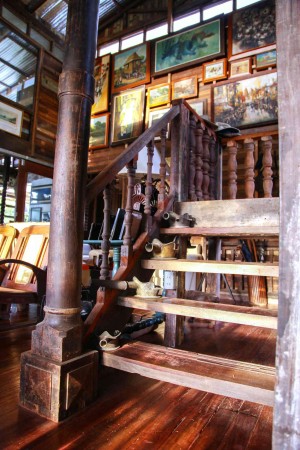
Ronald Ian Laing (pronounced Lane) was born in Manila on June 19, 1915. He was detained with his mother, Mercedes, a Spanish citizen, and brother Eric at the Sto. Tomas Interment Camp during World War II. Listed as a British POW, Laing went to San Francisco after Liberation and was mentored by Eddie Cavagnero, florist to Hollywood stars, who eventually became his long-time partner.
When he returned to Manila in 1957, Laing set up his famous Ronnie’s Flower Shop on A. Mabini in Ermita in 1957. By the late ’60s, he had become the style dictator of the city’s American ladies and Manila’s elite. All parties, weddings and home interiors had to be done by him. Corsages and gentlemen’s lapel carnations had to be ordered from Ronnie’s, including funeral wreaths, with his trademark of imported gold stickers spelling out the name of the deceased.
For his services to the former First Lady, then President Marcos granted Ronald Ian Laing Filipino citizenship on June 11, 1978.
Manila’s style maven shared a home with Cavagnero on Mango Avenue, Sta. Mesa, Manila. The house was built on a sprawling lot with apartments built at the back for Laing’s employees. It was in his home where he hosted intimate but casual dinners for his closest friends. On these occasions, he would buy plain white plates and have them sent to Hong Kong to be hand-painted with designs that matched the tablecloth or the theme of his party. None of the preparations was ostentatious; everything was done in understated elegance. Before they became fashionable, sinamay, driftwood, bamboo, ginger flowers, large gabi leaves and other local materials found their way into Laing’s designs.
His parties were never catered; all the dishes were prepared in his kitchen. Imelda Marcos and her Blue Ladies attended Laing’s bigger parties and so did the creme de la creme of Manila.
Despite celebrities gracing his parties, there were rare or no photographs of these events in the society pages of newspapers and magazines. Laing’s friends were aware that he valued his privacy and that his home was his sanctuary. He also preferred not to make public the large collection of antiques and porcelain that filled his open-air house. His friends still honor his privacy today and declined to have valuable pieces Laing had given them photographed.
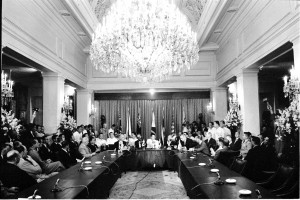
It is also interesting to note that Laing never saw the need to document any of his floral arrangements and table décor, even when his friends had insisted.
Laing was robbed and brutally killed in his home in 1987 while Cavagnero was in San Francisco. When Cavagnero returned to Manila, he sold the lot to PLDT, gifted their friends with pieces from Laing’s collections and sold the remaining pieces to local collectors or sent them to Christie’s New York for auction.
The entire wooden house was given to close friends, Dr. Januario and Lorna Estrada. The couple shared Laing’s and Cavagnero’s taste for traditional Filipino architecture.
The Estradas had the house dismantled piece by piece. Narra panels, carved wood screens, molave beams, kamagong planks, capiz and etched glass windows were carted to their home in Alabang. The couple had thought their children would use the materials to build their own homes in the future, but the youngsters eventually opted for more contemporary designs for their homes.
The materials were stored in a makeshift shed in one corner of the garden for almost 25 years. Through the years, termites destroyed the soft wood while time and water did in the other architectural details. In March 2011, Mrs. Estrada sold the remaining wood to me so she could finally fix up her garden.
Five long bed trucks hauled everything to my farm in Batangas where I had decided to build a separate dining room with the newly acquired antique wood.
Once while the room was still under construction, I woke up to the sound of wood and heavy objects hitting the floor late in the evening. Given Laing’s violent death, I presumed he was unhappy so I immediately prayed his soul would find eternal peace. The noise in the construction area continued for two more nights.
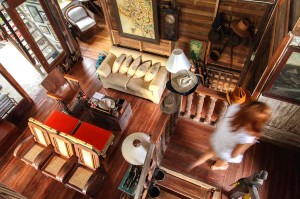
On the second evening, I grabbed my holy water and rosary (amazing how brave and insane one can become after drinking lambanog) and headed for the dark dining room to “gently encourage” Laing to rest in peace. The instant I turned on the lights, dozens of large field rats scrambled across the floor and beams, the commotion sending sawed off wood, carpentry tools, plastic tubs of wood putty, paint brushes and cans of Solignum tumbling and clattering to the floor. Apparently, the local carpenters not only didn’t clean up after they ate, or tidy up after work; they also left large gaps between the ceiling and wood panels where rats could pass. Sorry about that, Mr. Laing.
It was only lately that I learned of the provenance of the wood that now enclose my Batangas home. Knowing that the wood I recycled had once sheltered a man known for his artistry was an extremely pleasant surprise—sheer serendipity that added to the planks’ nostalgic and sentimental value.
Despite the tragedy these materials must have witnessed, I choose to regard my family’s “Decada Sisenta” farmhouse as a vessel of happy memories, inspired by Ronnie Laing’s legendary touch. I believe even he would have been glad that the artistry he had imbued into his home continues to live on, amply appreciated by those who once knew him. •


